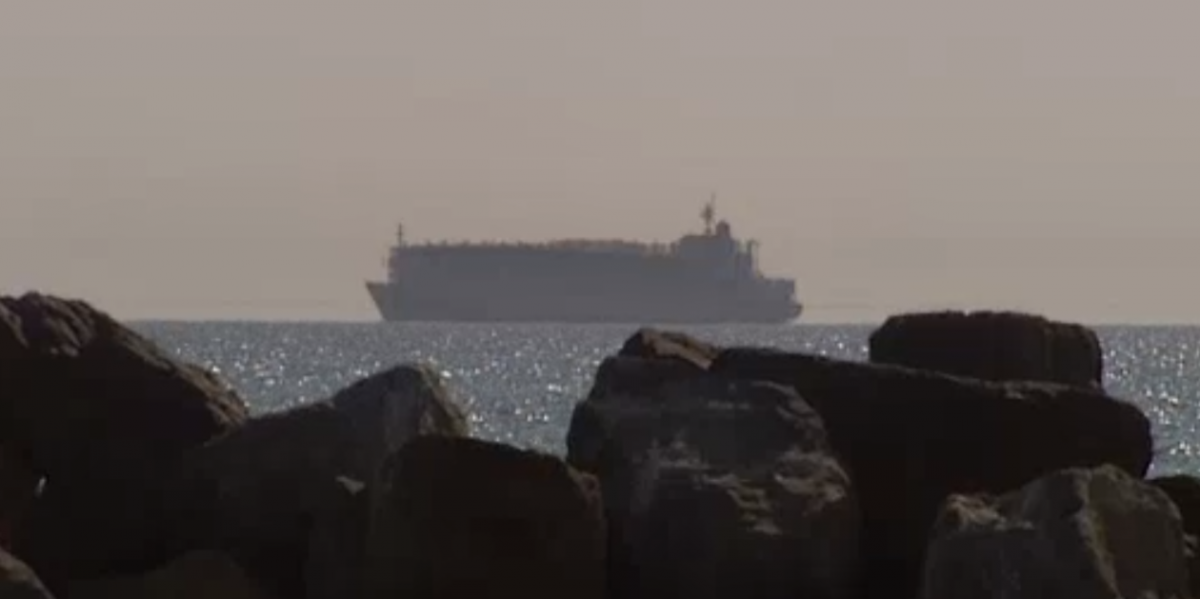Pakistan, 2012. It’s difficult to imagine a more unlikely setting for thousands of Australian sheep. Forsaken by Australian authorities and abandoned to a monstrous fate, they are stabbed, clubbed and buried alive by a crew of amateur butchers.
Egypt, 2013. Australian cattle have their eyes stabbed, leg tendons slashed, and are butchered while still alive.
The Gulf of Aden, 2013. Renowned as a hub of Somali pirate activity, 4000 Australian sheep, stranded on a ship en route to Qatar, are cooked alive in searing temperatures.
These are but a few glimpses into a total of 43 investigations that have been conducted into the live export trade since 2003, all of which have revealed egregious violations of international animal welfare standards, and countless breaches of what is clearly an impotent and untenable Exporter Supply Chain Assurance System (ESCAS).
Last month, ABC’s Lateline aired the findings of the latest investigation, which exposed yet more horrors in Gaza, Jordan and Kuwait. Undercover footage documented Australian cattle having their throats crudely sawn open, and Merino sheep being bound and stuffed into car boots, their throats cut and left to bleed out.
I must confess, I’m at a loss when it comes to live export. Whenever I lament the cruelty inherent in this grisly trade, my remarks are met with consternation by a litany of well-meaning people, many of whom have never left their urban environs, who fall over themselves in their rush to defend it. “But what about the farmers?!” is the token catch cry that gets trotted out ad nauseam.
While I’m perplexed by such fervor on the part of those who are largely unfamiliar with the intricacies of this issue, I’m not immune to their concerns. And yet, it doesn’t take a lot of digging to discover that their sudden and fleeting concern for our rural compatriots is little more than a well-intentioned, but ill-informed, distraction from the facts.
The ‘Live Export Trade Assessment’ report by the Australian Bureau of Agriculture and Resource Economics and Sciences, commissioned by the Department of Agriculture itself, revealed that live export is in fact a small industry, worth only 8 per cent of the value of Australia’s boxed meat exports in 2012/2013.

And contrary to popular belief, most Australian farmers don’t even sell to the live export trade. Only 7 per cent of all farms in Australia with more than 100 sheep sell to live export, while only 6 per cent of cattle raised for slaughter in Australia are sold into the trade.
What’s more, many agricultural economists claim there is a viable alternative to live export, one that would generate additional profits and jobs for the industry. I’m referring to the development of new abattoirs in the north of Australia, which would facilitate the domestic processing of livestock rather than outsourcing this significant component of the supply chain to countries in Asia and the Middle East. A sheep processed domestically for meat is worth 20 per cent more to the Australian economy than a live export sheep, due to this potential to add value from domestic processing.
We need only look across the ditch to see an example of this model in action. New Zealand, a country far more reliant on agricultural exports than Australia, moved to implement what is essentially a ban on live export in 2007.
According to the former agriculture minister who presided over the ban, the government recognised that despite best efforts, it simply wasn’t feasible to regulate what happens to the animals once they disembark on foreign soil. And overlooking likely animal welfare infringements was not only morally bankrupt, but could well jeopardise the country’s standing with international trade partners.
Like Australia, New Zealand’s live exports represented only a fraction of its chilled meat trade, and imperiling those valuable exports to US, European and Japanese supermarkets was deemed imprudent at best.
The NZ government was also reluctant to forego the benefits of domestic processing, understanding that implicit in live export is the forfeiture of local jobs, and the undermining of its own meat processing industry.
The latest breaches in Gaza are of particular concern, as the Australian export company legally responsible for these animals was implicated in similar atrocities in Gaza last year.
And the infringements don’t end there. There have been allegations of falsified documentation relating to onboard fatalities, the removal of animals’ ear tags in an effort to contaminate the chain of evidence, and the smuggling of animals across the Israel-Gaza border, beyond approved and legitimate supply chains.
At the heart of this problem is the conflict of interest borne by the Department of Agriculture, which is charged with advancing producers’ interests and overseeing animal welfare. Such mutual exclusivity is so patent as to be farcical, the corollary of which is a deeply troubling lack of independence and transparency.
After the most recent transgressions of ESCAS, Agriculture Minister Barnaby Joyce has, unsurprisingly, responded with the same platitudes and excuses as his predecessors. This government is evidently relying on the public to grow weary of this fraught issue, all the while negotiating its enormous expansion behind closed doors. Next stop, China, where like our other live export partners, animal welfare regulations are in frighteningly short supply.
Donate To New Matilda
New Matilda is a small, independent media outlet. We survive through reader contributions, and never losing a lawsuit. If you got something from this article, giving something back helps us to continue speaking truth to power. Every little bit counts.



